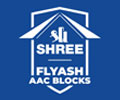AAC blocks have gained immense popularity in the Indian construction industry. Their lightweight nature, good thermal insulation, and larger size make them a preferred choice for both residential and commercial buildings. However, to gain the full benefits of these blocks, correct installation methods must be followed. Improper installation may lead to misalignment, weak joints, seepage, and structural problems over time. In this Fly ash AAC block installation guide, we explain the steps necessary to ensure proper installation:
Prepare the surface before laying
Start with a clean and even base. The foundation or slab surface must remain free from dust, oil, loose material, or debris. If the surface shows uneven patches, correct them with levelling mortar. A smooth and flat surface helps set the first course accurately, which ensures a strong base for the entire wall.
Select the right adhesive
Avoid traditional sand-cement mortar. Always select a factory-prepared adhesive made specifically for fly ash AAC blocks. These adhesives offer better bonding, reduce joint thickness, and lower the chances of shrinkage cracks. Follow the manufacturer’s instructions regarding water ratio and mixing. This step ensures the adhesive reaches the correct consistency, which supports uniform application and solid grip.
Mark accurate layout lines
Before starting block placement, mark both horizontal and vertical reference lines using chalk or string. These layout lines guide accurate wall alignment. Check and recheck measurements to maintain straight walls and precise 90-degree angles at corners. These steps remove guesswork and prevent cumulative alignment errors during the construction process.
Lay the first row with care
The first row defines the alignment and plumb of the entire wall. Use a spirit level to confirm accuracy after placing each block. Tap blocks gently into position using a rubber mallet. Avoid rushing during this step. Errors in the first course lead to major issues higher up the wall. Correct placement ensures solid load transfer and balance.
Maintain uniform joint thickness
Consistent joint thickness ensures proper bonding and stability. Maintain a gap of 3 to 5 mm for both vertical and horizontal joints. Use a notched trowel to apply adhesive in a uniform layer. Full coverage ensures strength and minimizes gaps. Avoid thick joints or excess adhesive, as this may cause uneven walls or weak bonding.
Offset vertical joints
Vertical joints in successive rows should never align. Place each block in a stretcher bond pattern to stagger the vertical joints. This layout improves wall strength, provides better load distribution, and avoids weak points. After completing each layer, recheck vertical alignment and use a plumb line to maintain straight walls throughout the structure.
Cut blocks with precision
For corners, door openings, and window edges, use only proper tools such as a hand saw or a lightweight concrete cutter. These tools allow accurate and clean cuts, which support better bonding and improved aesthetics. Avoid rough handling or use of hammers, as broken blocks often result in gaps, weak spots, and poor alignment.
Carry out light curing
Unlike traditional bricks, fly ash AAC blocks absorb less water. As a result, heavy curing becomes unnecessary. Lightly spray water over the joints for two to three days. This promotes adhesive strength without weakening the bond. Avoid excess water, which may reduce wall strength and create damp patches. Use of less water is a key advantage of using AAC blocks over traditional Red bricks.
Proper supervision
The site team must remain well-trained and aware of the correct procedures. Regular checks from site engineers or supervisors help maintain quality throughout the project. Address errors immediately. Timely action helps avoid long-term problems and increases the structure’s life span.
Store materials with care
Store fly ash AAC blocks in a dry, shaded area to protect them from moisture. Keep pallets off the ground and cover them to avoid exposure to rain or surface water. Adhesive bags must remain sealed and stored in dry conditions to preserve bonding strength.
Correct installation of fly ash AAC blocks ensures a long-lasting, durable, and energy-efficient structure. With proper planning, training, and supervision, contractors can achieve superior results while reducing costs and construction time.

